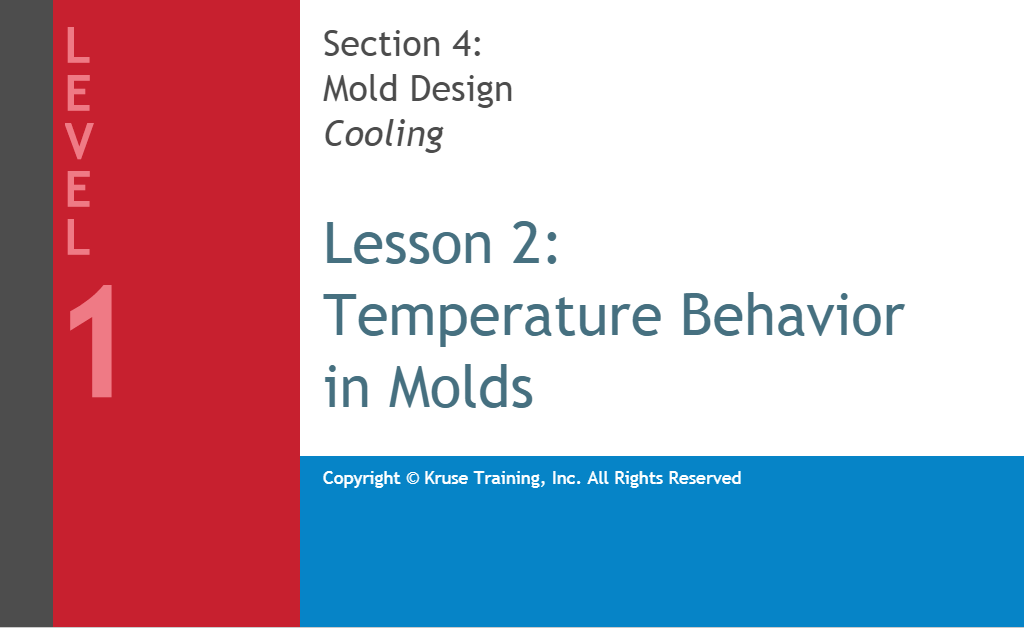Temperature behavior inside an injection mold is the primary determining factor in final part quality and cycle time. It is important for part designers to understand how temperature behaves inside a mold cavity in order to optimize their designs. Then mold designers can evaluate temperature control options such as coolant line placements and size, and tool steel selection. Finally, when process engineers understand the mold design and coolant line circuit layouts, they can adjust the temperature control devices. All three steps are equally important to produce quality parts with the fastest possible cycle times.
This lesson covers: why the cooling phase is the ideal time to make cycle time adjustments; how conduction, convection, and radiation play a role in the cooling phase; factors that affect temperature behavior inside molds; the role of heat exchange, heat transfer effectiveness, and mold temperature cycles in cooling; and how wall thickness affects cooling behavior in a mold.

